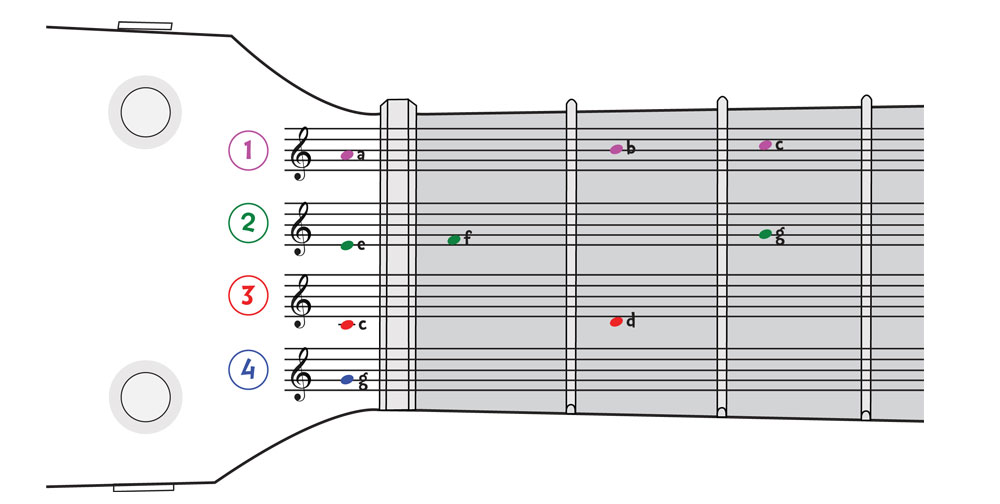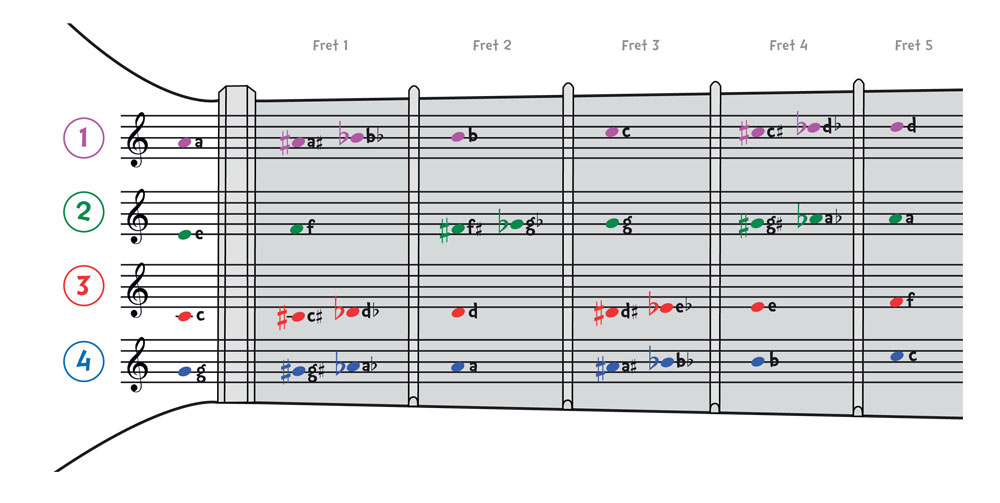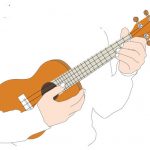FAQ for ukulele teachers
Which ukulele tuning is used in the books?
The Rainbow Ukulele books are written for GCEA tuning, with a high G (4th) string. This is the most standard tuning for the smaller (soprano) ukuleles most often played by younger pupils. The larger sizes of ukulele (concert and tenor) often have exactly the same tuning as the soprano.
The materials as they stand would not work so well with a ukulele which has the 4th tuned to low G.
Very occasionally, a pupil may wish to learn baritone ukulele, which has a completely different tuning – DGBE like the top four strings of the guitar. In this case the pupil could start with Rainbow Guitar Book 1, which also happens to be a perfect beginner’s book for baritone ukulele.
What are the note ranges of the Rainbow Ukulele books?
In Rainbow Ukulele Book 1, the pupil plays open string melodies to start with. Fretted notes are added one by one until the pupil knows an octave of natural notes from C to C. 
By the end of Book 2 the pupil has met all the fretted notes up to fret 5, and occasionally played above fret 5 on the top string.

In the online materials, the notes are introduced in the same order. Groups 1 – 5 correspond to Book 1, and Groups 5 – 11 correspond to Book 2.
What is the approach to the right hand?
The right hand is a very individual thing in the ukulele world! The Rainbow Ukulele books aim to be as flexible as possible.
In Book 1 all the music can be plucked using just the thumb, holding the ukulele as shown. However, finger plucking can be introduced at more or less any time.

Book 2 deals explicitly with finger plucking, and various combinations of thumb and fingers.
The book is designed so that teachers can teach right hand plucking techniques in almost any order. And almost all the pieces can be played using “thumb only” or with a plectrum.
In the online materials, some of the pieces are linked to video files, which are played with a variety of thumb and finger plucking techniques.
What about ukulele chords?
Ukulele pupils are very different from each other when it comes to chords. Some are ready to strum and enjoy ukulele chords from Day One. Others will really struggle to make a good chord sound to begin with – these pupils will be better off focussing on melodies for a while, building up finger strength and co-ordination as they do so. However, chords are really crucial to the ukulele sound and the pupil cannot avoid them for ever!
In Rainbow Ukulele Book 1, chord symbols are provided whenever appropriate and there are chord diagrams at the back of the book. It is left entirely up to the teacher and pupil how much chord playing to do, and at which stage.
Many of the pieces have other kinds of accompaniments too – drones and simple broken-chord patterns. At this technical level, these can often be more fun and interesting than strummed chords – both for the player and the listener.
In Book 2, the approach is similar but at this stage it is fair to assume that the pupil will have some chord mastery. The book goes into a little more detail about how to interpret the chord symbols from a lead sheet, and turn them into interesting accompaniments. The notated arrangements also start to feature strummed and plucked chords, and broken-chord patterns.
In the online materials, chord symbols are generally placed in a separate Part, which is hidden by default but can be displayed if required.